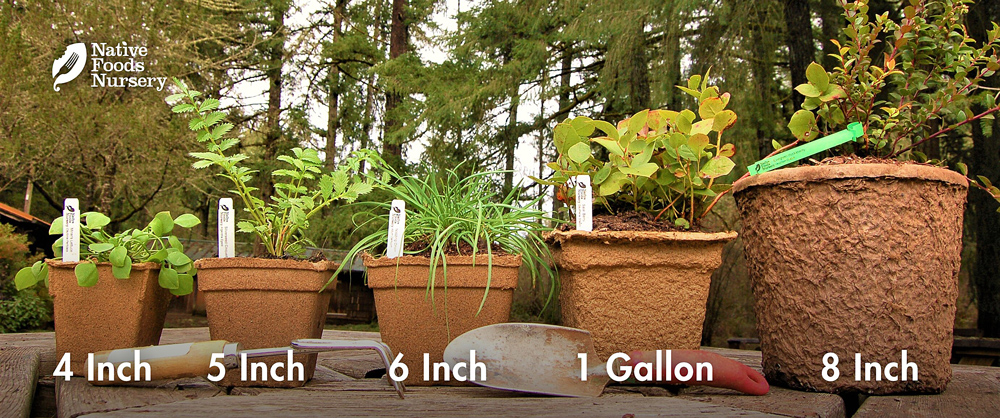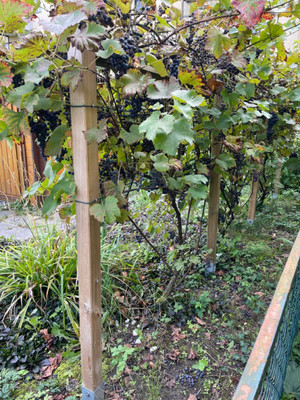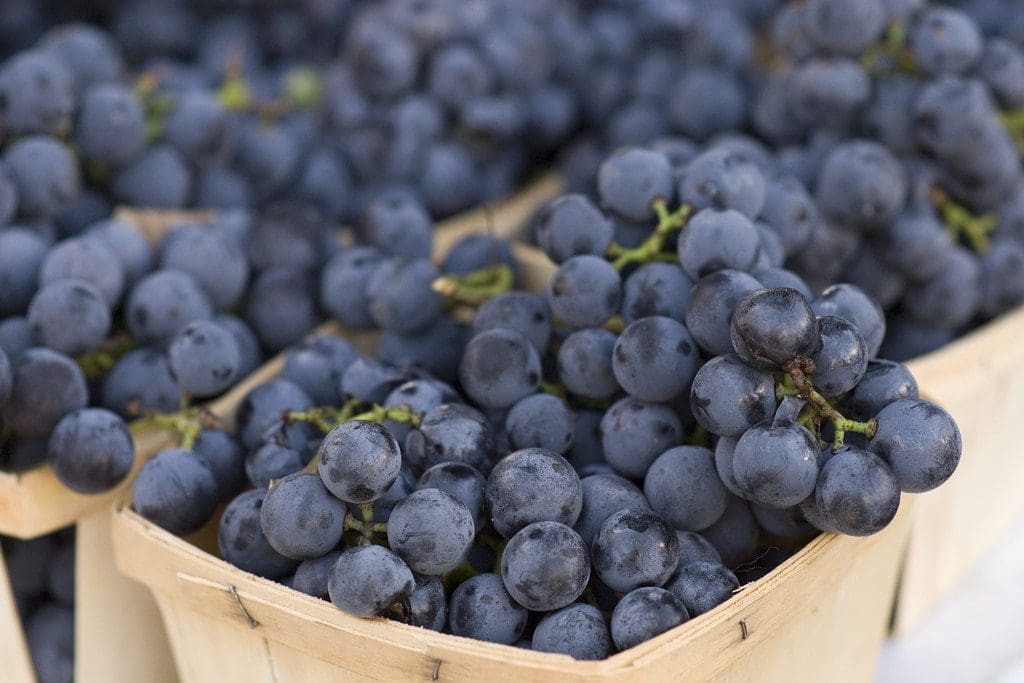Bluebell - Table Grape
- Current Stock:
- 0
- Other Names:
- Bluebell
- Latin Name:
- Vitis riparia x labrusca
Bluebell brings that nostalgic, sweet Concord-like flavor to cold-climate gardens. Bred in Minnesota and rooted in native Vitis riparia genetics, it’s a rugged, cold-hardy table grape that thrives where others fail — offering dependable crops for northern growers and permaculture landscapes alike [1][2][3].
Note: COMING AVAILABLE APRIL 2026! Bluebell is seeded with a classic “slip-skin” character — easy to eat fresh and perfect for juice or jelly [2].
Edible Uses
Bluebell’s rich, aromatic, sweet-tart flavor rivals Concord, with deep purple-blue berries that slip easily from their skins. Excellent fresh eating grape — juicy, fragrant, and slightly floral — and equally superb for juice, jelly, and preserves [2][4][5]. It ripens earlier than Concord, producing consistently even in cool summers [5].
Ornamental Qualities
A vigorous, twining vine with glossy summer leaves and showy clusters, perfect for arbors, fences, or edible privacy screens. Provides shade and wildlife value while producing abundant fruit.
Environment and Culture
Bluebell descends from native Vitis riparia lines bred by the University of Minnesota (cross of ‘Beta’ × labrusca-type) and released in 1944 [1]. V. riparia contributes the hardiness, disease tolerance, and adaptability that make this vine ideal for regenerative and permaculture systems [3].
Harvest, Care, and Preparation
Bluebell is self-fertile and cold-hardy to −35 °F (Zone 3), with low susceptibility to downy mildew and bunch rots, and moderate resistance to black rot and powdery mildew [2][3][6]. Train to a sturdy trellis; prune annually to renew fruiting canes. Harvest mid-season when berries are fully blue and aromatic — a sure sign of peak sugar content.
Attributes
- Native Heritage: Riparia-based (North American wild grape genetics) [1][3]
- USDA Zones: 3–8 (hardy to −35 °F) [2][6]
- Ease of Care: Easy (vigorous and disease-tolerant)
- Light Requirements: Full sun
- Soil Type: Well-drained loam or sandy loam; adaptable
- Water Requirements: Moderate; steady moisture during fruit swell
- Pollination: Self-fertile (perfect flowers)
- Bearing Age: 2–3 years from planting
- Vine Size: Vigorous climber; strong trellis recommended
- Ripening Window (PNW): Mid-season (earlier than Concord) [5]
- Use: Fresh eating, juice, jelly; sweet-tart flavor, slip-skin berries [2][4][5]
- Disease Resistance: Low to moderate disease pressure (downy mildew, bunch rots) [2][6]
NFN Grape Comparison Table
| Grape | Type & Use | Native Range / Pedigree | Flavor Notes | Cold Hardiness (approx.) | Site & Water | Notes |
|---|---|---|---|---|---|---|
| California Wild Grape Vitis californica |
Wild species; fresh nibbling, jelly/juice; top wildlife vine | CA & s.w. OR riparian canyons/valleys | Classic “wild-grape” tang; better sugars in full sun/heat | ~USDA 7–9 | Full sun; deep, infrequent watering after establishment | Fast, vigorous screen/arbor vine; great for Mediterranean/coastal West. :contentReference[oaicite:1]{index=1} |
| Arizona / Canyon Grape Vitis arizonica |
Wild species; jelly/juice; drought-tough habitat vine | S. NV–UT–AZ–NM–W. TX; N. Mexico canyons/streams | Tart-sweet; bright acidity; improves with heat | ~USDA 6–9 | Full sun; lean, well-drained soils; very drought-adapted | Used in breeding for disease tolerance; excels in arid/interior West. :contentReference[oaicite:2]{index=2} |
| ‘Bluebell’ V. riparia × V. labrusca |
Table/juice (seeded); cold-hardy backyard favorite | UMN release (1944); ‘Beta’ × labrusca-type | Concord-like, sweet-aromatic; slipskin | to about −30 °F (Zone 3–4) | Full sun; average soils; regular summer water for best size | Best riparia-line **table** choice for cold regions. :contentReference[oaicite:3]{index=3} |
| ‘Frontenac gris’ (Frontenac bud mutation; Frontenac = Landot 4511 × V. riparia sel.) |
Wine/juice (processing); high acids, aromatic | UMN release (2003); riparia-based breeding | Stone fruit, citrus/tropical notes in wine | to about −30 °F (Zone 3–4) | Full sun; trellis; consistent water; manage acids with harvest timing | Flagship cold-climate wine grape; not ideal as a table grape. :contentReference[oaicite:4]{index=4} |
References
[1] UC Davis FPS — Grape Variety: Bluebell (release year & pedigree).
[2] Univ. of Minnesota Enology — Bluebell Factsheet (fruit description, use, disease notes).
[3] USDA PLANTS / NatureServe — Vitis riparia native range & breeding significance.
[4] UMN Enology Program — cluster size, flavor, ripening window.
[5] Double A Vineyards — cultivar page (“earlier and hardier than Concord”).
[6] North Dakota State University Extension — cold-hardiness and disease resistance notes.
Pot Sizing Guide

Planting Guide: Bluebell (Vitis riparia × V. labrusca)
Tip: Choose full sun, well-drained soil, and a strong trellis. Bluebell thrives in rugged northern sites where vinifera grapes fail.
Choosing a Site
Light: Full sun (6–8+ hours daily).
Soil: Well-drained loam or sandy loam; moderate fertility; compost enhances moisture retention.
Spacing: 8–10 ft between vines on a two-wire trellis.
Planting Steps
Plant in spring once frost risk has passed. Soak roots 30–60 minutes before planting.
Set crown at prior soil line; backfill; water deeply to settle. Mulch lightly (keep mulch off stem).
Watering & Care
Establishment: Keep evenly moist for first 1–2 years.
After establishment: Moderate water; avoid soggy soils.
Training: Train to trellis; prune annually to renew 1-year fruiting canes.
Feeding: Compost in spring; avoid heavy nitrogen.
Protection
Wildlife: Birds love ripe fruit—use netting as berries color.
Cold: Hardy to −35 °F; mulch roots in exposed sites.
Disease: Excellent resistance to downy mildew and bunch rot; good airflow further reduces risk.
Harvest Basics
Timeline: First fruit 2–3 years after planting.
Season: Mid-season; earlier than Concord.
Use: Fresh eating, juice, jelly; aromatic and sweet-tart flavor.






